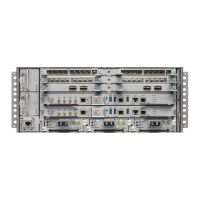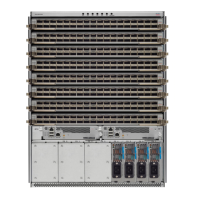3. address-family { ipv4 | ipv6 } unicast
4. exit
5. neighbor-group name
6. remote-as as-number
7. address-family { ipv4 | ipv6 } unicast
8. route-policy route-policy-name { in | out }
9. exit
10. exit
11. neighbor ip-address
12. use neighbor-group group-name
13. remote-as as-number
14. commit
DETAILED STEPS
PurposeCommand or Action
configure
Step 1
Specifies the autonomous system number and enters the
BGP configuration mode, allowing you to configure the
BGP routing process.
router bgp as-number
Example:
RP/0/RP0/CPU0:router(config)# router bgp 120
Step 2
Specifies either an IPv4 or IPv6 address family unicast
and enters address family configuration submode.
address-family { ipv4 | ipv6 } unicast
Example:
Step 3
To see a list of all the possible keywords and arguments
for this command, use the CLI help (?).
RP/0/RP0/CPU0:router(config-bgp)# address-family
ipv4 unicast
Exits the current configuration mode.exit
Example:
Step 4
RP/0/RP0/CPU0:router(config-bgp-af)# exit
Places the router in neighbor group configuration mode.
neighbor-group name
Example:
Step 5
RP/0/RP0/CPU0:router(config-bgp)# neighbor-group
nbr-grp-A
Creates a neighbor and assigns a remote autonomous
system number to it.
remote-as as-number
Example:
Step 6
RP/0/RP0/CPU0:router(config-bgp-nbrgrp)# remote-as
2002
Specifies either an IPv4 or IPv6 address family unicast
and enters address family configuration submode.
address-family { ipv4 | ipv6 } unicast
Example:
Step 7
Routing Configuration Guide for Cisco NCS 6000 Series Routers, IOS XR Release 6.4.x
63
Implementing BGP
Configuring a BGP Neighbor Group and Neighbors

